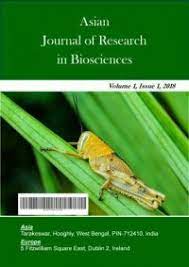Ver ítem
- xmlui.general.dspace_homeCentros e Institutos de InvestigaciónCIAP. Centro de Investigaciones AgropecuariasInstituto de Investigación Animal del Chaco SemiáridoArtículos científicosxmlui.ArtifactBrowser.ItemViewer.trail
- Inicio
- Centros e Institutos de Investigación
- CIAP. Centro de Investigaciones Agropecuarias
- Instituto de Investigación Animal del Chaco Semiárido
- Artículos científicos
- Ver ítem
Epidemiology of Goat Nematode Infections in Different Ecological Regions of Argentina´S Northwest
Resumen
The aim of this work was to study the etiology and epidemiology of gastrointestinal nematodes (GIN) of goat from the Arid valleys and canyons (AVC), Tempered valleys (TV) and the Semiarid Chaco (SC) regions of northwestern Argentina. Ten flocks were studied and 35 to 40 goats per flock (total= 420 goats) were fecal matter sampled each 30-40 days. Individual eggs per gram of faeces (epg) and faeces cultures were performed. Differences among epg were
[ver mas...]
The aim of this work was to study the etiology and epidemiology of gastrointestinal nematodes (GIN) of goat from the Arid valleys and canyons (AVC), Tempered valleys (TV) and the Semiarid Chaco (SC) regions of northwestern Argentina. Ten flocks were studied and 35 to 40 goats per flock (total= 420 goats) were fecal matter sampled each 30-40 days. Individual eggs per gram of faeces (epg) and faeces cultures were performed. Differences among epg were compared using Kruskal–Wallis non-parametric test. The epg of the three regions showed the same trend: an increment from February reaching the highest average epg peak in April-May and then a fall towards the summer. Goat flocks of TV region showed the highest epg compared to the other two regions, which generally showed low epg values. Haemonchus sp. and Trichostrongylus spp. were the predominant nematode genera recovered in the three regions, although in a smaller proportion Teladorsagia, Oesophagostomum, Nematodirus, Trichuris, Skrjabinema and Strongyloides genera were also recovered. These results show that GIN would be a limiting factor of caprine production in the TV and only during critical periods and under some breeding systems in the other regions.
[Cerrar]

Fuente
Asian Journal of Research in Biosciences 3 (1) : 29-37 (2021)
Fecha
2021-04-29
Editorial
Global Press Hub
Formato
pdf
Tipo de documento
artículo
Palabras Claves
Derechos de acceso
Abierto
 Excepto donde se diga explicitamente, este item se publica bajo la siguiente descripción: Creative Commons Attribution-NonCommercial-ShareAlike 2.5 Unported (CC BY-NC-SA 2.5)
Excepto donde se diga explicitamente, este item se publica bajo la siguiente descripción: Creative Commons Attribution-NonCommercial-ShareAlike 2.5 Unported (CC BY-NC-SA 2.5)


